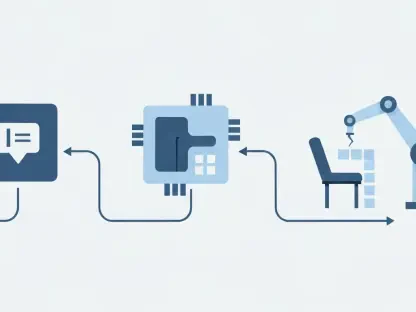In the evolving landscape of digital marketing, achieving success in search engine optimization (SEO) has become increasingly complex, requiring innovative approaches and tools. As search engines evolve, so does the expectation for quality content that is not only relevant and engaging but also aligned with rigorous optimization strategies. The traditional methods, characterized by fragmented communication and isolated workflows, often hinder the efficiency and effectiveness needed to maintain a competitive edge in today’s fast-paced digital environment. With the introduction of content collaboration tools, there’s a transformative shift in how teams approach SEO, streamlining processes and enhancing productivity. This integration of advanced platforms into SEO practices marks a significant leap towards achieving superior results by fostering a cohesive environment where creative and technical elements synergize seamlessly.
Collaborative Tools Shifting the Content Creation Paradigm
Content collaboration tools are transforming the way modern organizations produce SEO-driven content by fostering an integrated, real-time approach that breaks down barriers between team members. These platforms are designed to facilitate smoother communication and more streamlined workflows, eliminating the chaos of traditional email and spreadsheet-based coordination. In today’s competitive digital realm, speed, precision, and adaptability are crucial for staying ahead. Modern collaboration tools offer functionalities such as real-time editing, task management, and automated version control, all of which contribute to reducing the time needed to publish high-quality, optimized content. This shift in the paradigm of content creation not only ensures a more efficient process but also allows teams to tap into trending topics quickly and effectively.
The seamless integration offered by these tools means writers, designers, editors, and SEO specialists can work synchronously on a single platform. This not only enhances the consistency and quality of the content produced but also ensures that all team members have access to the latest updates and insights. The collaborative nature of these tools leads to more cohesive and coherent content strategies that naturally incorporate SEO elements into the creative process. By breaking down the traditional silos between departments and fostering an environment of open communication and continuous feedback, companies can maintain a steady flow of relevant and engaging content that adheres to SEO best practices and meets the dynamic demands of the digital audience.
Enhancing Speed and Quality in SEO Content
The modern digital environment demands that content be produced swiftly while maintaining high standards of quality to ensure competitiveness and relevancy. Content collaboration tools address this need by providing robust features that allow teams to generate and refine content more efficiently without sacrificing quality. These platforms offer real-time collaborative editing capabilities, which are essential for maintaining the momentum needed to capitalize on timely topics and trends. Built-in commenting systems ensure that feedback is immediate and actionable, allowing for quick revisions and improvements before the content goes live. This agility is crucial for maintaining a competitive edge, as it positions organizations to act faster than their rivals in capturing audience interest and enhancing search engine visibility.
Moreover, the integration of SEO-specific tools within these platforms means that keyword and content optimization can occur simultaneously with content creation. This synchronization prevents common issues such as keyword stuffing or the omission of crucial SEO elements by ensuring that SEO considerations are an integral part of the content development process. By incorporating analytical insights directly into the content creation workflow, teams can make more informed decisions about what content to produce and how to optimize it for both search engines and users. As a result, the collaborative process ensures that every piece of content is not only of high quality but also strategically designed to enhance the brand’s overall search presence.
Bridging Departments for Seamless Workflow
The advent of content collaboration tools has revolutionized cross-departmental interactions by facilitating seamless workflows that enhance overall productivity. Traditionally, content creation and optimization involved siloed departments, each focused on distinct objectives, often resulting in disjointed efforts. By centralizing communication and collaboration, these tools enable multiple stakeholders—such as writers, SEO specialists, and project managers—to engage in the content creation process concurrently. This synchronized approach ensures that ideas are shared freely and immediately, leading to more innovative solutions and coherent content strategies. The ability for departments to work in concert rather than isolation streamlines processes, reduces redundancies, and enhances overall efficiency in content production.
Additionally, the centralized workspaces offered by collaboration platforms enhance transparency, allowing all team members visibility into the progress of content development. This transparency is essential for aligning content with broader marketing and business goals, fostering accountability, and ensuring that all content pieces are consistent with the brand’s voice and objectives. By breaking down barriers between departments and facilitating a more integrated approach, these platforms promote a culture of continuous improvement and learning. This culture not only heightens the quality of content produced but also ensures that all pieces are optimized to meet the continuously evolving demands of SEO practices and audience expectations.
The Strategic Role of Fresh and Relevant Content
The strategic importance of producing fresh and relevant content is underscored by the ability of collaboration tools to enhance idea generation and execution. Search engines prefer sites that consistently provide updated and relevant information, interpreting this as a signal of trustworthiness and authority. Collaboration platforms facilitate this by enabling swift publication of content that aligns with current trends and audience interests, resulting in improved search engine rankings. The capability to rapidly deploy new content ensures that organizations remain at the forefront of their respective industries, responding to evolving market demands more adeptly than competitors who rely on traditional methods.
In addition to supporting timely content publication, these tools also offer sophisticated analytics and insights that guide the creation of content strategies. By leveraging data-driven insights into audience preferences and trends, content teams can produce material that is not only relevant and engaging but also strategically optimized for SEO. This approach allows businesses to build a robust content library that enhances their digital footprint and strengthens their position within their industry. The continuous cycle of producing, evaluating, and refining content based on real-time data ensures that the digital presence of an organization remains dynamic and relevant, which is essential for long-term SEO success.
Keyword Integration and Communication Efficiency
Effective keyword integration is a fundamental aspect of successful SEO strategies, and collaboration tools enhance this process by facilitating communication among team members responsible for content development. The shared workspaces offered by these platforms provide access to centralized keyword databases and optimization insights, ensuring that all stakeholders are aligned on the content’s SEO focus. This coordination prevents common pitfalls such as overuse of keywords or the lack of proper keyword distribution across content pieces. By providing real-time access to keyword insights and SEO analysis, collaboration tools enable content teams to efficiently integrate strategic keywords, paving the way for improved search engine performance.
The ability to share insights and data in real time also fosters an environment of open communication and collaboration, essential for precise keyword targeting. SEO specialists can convey crucial insights to content creators, ensuring that each piece of content is tailored to maximize search visibility. Moreover, this concerted effort towards keyword integration means that potential opportunities are less likely to be missed due to miscommunication or outdated information. As a result, collaboration tools play a critical role in enhancing the effectiveness and cohesiveness of SEO strategies, ultimately contributing to improved search rankings and digital visibility.
Quality Control and Review Processes
Ensuring that content adheres to high quality and SEO standards is an essential part of the content development process, and collaboration tools streamline this phase through real-time feedback and review capabilities. These platforms enable multiple stakeholders to provide input simultaneously, accelerating the review process and significantly reducing the time from draft to publication. Through streamlined review processes, organizations ensure that all content aligns with brand messaging and meets technical and creative standards. This immediate feedback loop plays a pivotal role in maintaining content quality as it allows teams to quickly identify and rectify any issues, thus ensuring that only refined, optimized content reaches the audience.
Furthermore, collaboration tools facilitate the establishment of automated workflows for quality assurance, which increases efficiency and consistency across all content types. By embedding these processes into the content creation cycle, teams can systematically evaluate each content piece for its compliance with brand regulations and SEO criteria. This ensures that all content reflects the organization’s brand voice and effectively engages its target audience while also meeting search engine guidelines. The refined coordination and communication brought about by collaboration tools thus play a crucial role in assuring content quality and organic reach, laying the foundation for sustainable SEO success.
Conclusion: Harnessing Collaboration for SEO Advancement
Content collaboration tools are revolutionizing how contemporary organizations produce SEO-oriented content by promoting an inclusive, real-time approach that dismantles barriers among team members. These platforms are engineered to enhance communication and streamline workflows, replacing the chaos of traditional email and spreadsheet-based coordination. In the competitive realm of digital content, speed, accuracy, and flexibility are vital for gaining an edge. Modern collaboration tools provide features like real-time editing, task management, and automatic version control, all of which shorten the time to publish high-quality, optimized content. Such a shift in content creation not only ensures efficiency but also allows teams to tap into trending topics swiftly. The integration enabled by these tools allows writers, designers, editors, and SEO experts to collaborate synchronously, enhancing the consistency and quality of content while keeping everyone updated. This collaborative environment fosters open communication, ensuring relevant content that aligns with SEO best practices and meets digital audience demands.









